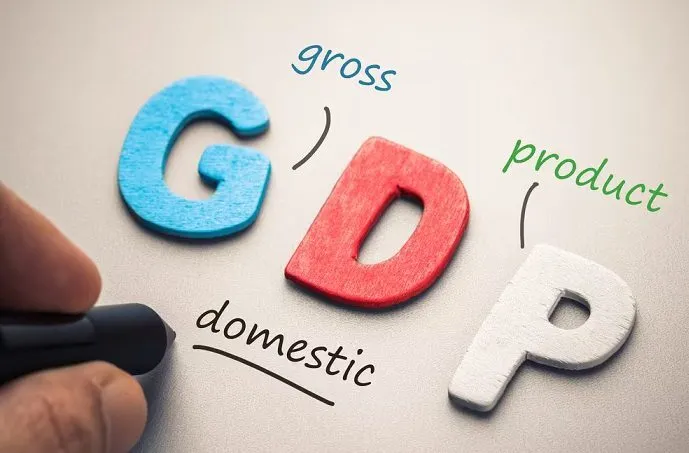Looking at the GDP forecast by country for 2025, we can see that global economic growth is projected at 3.3 percent for both 2025 and 2026, which is actually below the historical average of 3.7 percent according to the International Monetary Fund.
The United States continues to lead with $30.51 trillion, and then we have China at $19.23 trillion, Germany at $4.74 trillion, and also India at $4.19 trillion. These 2025 GDP projections by country reveal that the IMF GDP growth forecast for 2025 indicates some pretty divergent paths amid policy uncertainty, with the largest economies by GDP in 2025 maintaining their dominance while facing varied growth challenges in the world GDP ranking by country for 2025.
Also Read: BRICS Economy vs US: Set to Outgrow US 1.4x by 2075, Japan Drops
2025 GDP Forecasts, IMF Projections, And Country Rankings Explained

Leading Economic Powers Drive Global Growth
Right now, the largest economies by GDP in 2025 continue to shape global economic trends in significant ways. The United States maintains its position with a projected GDP of $30.51 trillion, and it’s benefiting from upward revisions.
China’s economy faces more complex challenges with its $19.23 trillion projection. At the time of writing, recent analysis suggests actual growth rates have been below official targets, with economists projecting 3-4.5% growth if China stimulates domestic demand urgently and also ramps up debt financing.
Germany, ranked third at $4.74 trillion, is experiencing manufacturing challenges right now. The European Commission has noted that domestic demand is expected to become the main growth driver in 2025 and 2026, supported by easing monetary policy and also lower financing costs.
India’s position as the fourth-largest economy at $4.19 trillion represents a significant shift in the world GDP ranking by country for 2025. The country maintains a growth rate of 6.2% for 2024-25 and 2025-26, making it one of the fastest-growing major economies when we look at the GDP forecast by country for 2025. The nation’s economic contributors include digital infrastructure, traditional agriculture, technology services, and also business outsourcing. India’s per capita income has increased substantially, showing almost 188% growth over the last decade, which reflects the strength seen in current IMF GDP growth forecast for 2025 projections.
Top 10 Global Economies by GDP Forecast 2025
IMF World Economic Outlook Projections (Million US$)
| Rank | Country | GDP (M US$) | Year |
|---|---|---|---|
| 1 | 🇺🇸United States | 30,507,217 | 2025 |
| 2 | 🇨🇳China | 19,231,705 | 2025 |
| 3 | 🇩🇪Germany | 4,744,804 | 2025 |
| 4 | 🇮🇳India | 4,187,017 | 2025 |
| 5 | 🇯🇵Japan | 4,186,431 | 2025 |
| Rank | Country | GDP (M US$) | Year |
|---|---|---|---|
| 6 | 🇬🇧United Kingdom | 3,839,180 | 2025 |
| 7 | 🇫🇷France | 3,211,292 | 2025 |
| 8 | 🇮🇹Italy | 2,422,855 | 2025 |
| 9 | 🇨🇦Canada | 2,225,341 | 2025 |
| 10 | 🇧🇷Brazil | 2,125,958 | 2025 |
Asian Economic Dynamics and European Recovery
Japan, also projected at $4.19 trillion, faces supply chain challenges in automotive sectors right now. However, the government anticipates reaching full economic capacity in the next financial year for the first time in seven years, which is quite significant.
The United Kingdom ($3.84 trillion), France ($3.21 trillion), and also Italy ($2.42 trillion) are navigating post-pandemic recovery while managing monetary policy changes. These economies represent significant portions of the largest economies by GDP in 2025.
Canada ($2.23 trillion), Brazil ($2.13 trillion), and also Russia ($2.08 trillion) demonstrate how commodity-exporting nations perform within the current framework when we examine the GDP forecast by country for 2025.
Mid-Tier Economies and Commodity Exporters
Countries such as Mexico ($1.69 trillion), Turkey ($1.44 trillion), and also Indonesia ($1.43 trillion) show varied performance in the world GDP ranking by country for 2025. Mexico faces particular exposure to trade policy changes due to its U.S. economic integration, which is quite concerning at the time of writing.
Australia ($1.77 trillion) deals with China’s structural slowdown affecting its export-dependent sectors, while Switzerland ($947 billion) and also the Netherlands ($1.27 trillion) maintain strong positions through economic diversification.
Countries 11-50 by GDP Forecast 2025
IMF World Economic Outlook Projections (Million US$)
| Rank | Country | GDP (M US$) | Year |
|---|---|---|---|
| 11 | 🇷🇺Russia | 2,076,396 | 2025 |
| 12 | 🇪🇸Spain | 1,799,511 | 2025 |
| 13 | 🇰🇷South Korea | 1,790,322 | 2025 |
| 14 | 🇦🇺Australia | 1,771,681 | 2025 |
| 15 | 🇲🇽Mexico | 1,692,640 | 2025 |
| 16 | 🇹🇷Turkey | 1,437,406 | 2025 |
| 17 | 🇮🇩Indonesia | 1,429,743 | 2025 |
| 18 | 🇳🇱Netherlands | 1,272,011 | 2025 |
| 19 | 🇸🇦Saudi Arabia | 1,083,749 | 2025 |
| 20 | 🇵🇱Poland | 979,960 | 2025 |
| 21 | 🇨🇭Switzerland | 947,125 | 2025 |
| 22 | 🇹🇼Taiwan | 804,889 | 2025 |
| 23 | 🇧🇪Belgium | 684,864 | 2025 |
| 24 | 🇦🇷Argentina | 683,533 | 2025 |
| 25 | 🇸🇪Sweden | 620,297 | 2025 |
| 26 | 🇮🇪Ireland | 598,840 | 2025 |
| 27 | 🇮🇱Israel | 583,361 | 2025 |
| 28 | 🇸🇬Singapore | 564,774 | 2025 |
| 29 | 🇦🇪United Arab Emirates | 548,598 | 2025 |
| 30 | 🇹🇭Thailand | 546,224 | 2025 |
| Rank | Country | GDP (M US$) | Year |
|---|---|---|---|
| 31 | 🇦🇹Austria | 534,301 | 2025 |
| 32 | 🇳🇴Norway | 504,276 | 2025 |
| 33 | 🇵🇭Philippines | 497,495 | 2025 |
| 34 | 🇻🇳Vietnam | 490,970 | 2025 |
| 35 | 🇧🇩Bangladesh | 467,218 | 2025 |
| 36 | 🇲🇾Malaysia | 444,000 | 2025 |
| 37 | 🇩🇰Denmark | 449,940 | 2025 |
| 38 | 🇮🇷Iran | 446,313 | 2025 |
| 39 | 🇨🇴Colombia | 427,766 | 2025 |
| 40 | 🇭🇰Hong Kong | 423,999 | 2025 |
| 41 | 🇿🇦South Africa | 410,338 | 2025 |
| 42 | 🇷🇴Romania | 403,395 | 2025 |
| 43 | 🇨🇿Czech Republic | 360,244 | 2025 |
| 44 | 🇪🇬Egypt | 347,342 | 2025 |
| 45 | 🇨🇱Chile | 343,823 | 2025 |
| 46 | 🇵🇹Portugal | 321,440 | 2025 |
| 47 | 🇫🇮Finland | 303,945 | 2025 |
| 48 | 🇵🇪Peru | 303,293 | 2025 |
| 49 | 🇰🇿Kazakhstan | 300,538 | 2025 |
| 50 | 🇬🇷Greece | 267,348 | 2025 |
Global Trade Outlook and Policy Uncertainty
Right now, policy uncertainty significantly affects the IMF GDP growth forecast for 2025. The IMF projects global trade growth will dip to 1.7% in 2025, which represents a significant downward revision from earlier projections and is quite worrying.
This uncertainty impacts investment decisions across the largest economies by GDP in 2025. Central banks are balancing inflation concerns with growth support, with the Federal Reserve expected to cut rates by 50 basis points in 2025, which could help stimulate growth.
Also Read: America Urges India To Reject BRICS: ‘Do Business With the US’
The sustainability of these projections when we look at the GDP forecast by country for 2025 depends on how successfully nations manage policy transitions while addressing structural challenges. The world GDP ranking by country for 2025 reflects not just current economic size but also underlying factors determining future performance, including demographic trends, technological adoption, and also institutional quality in these 2025 GDP projections by country.






